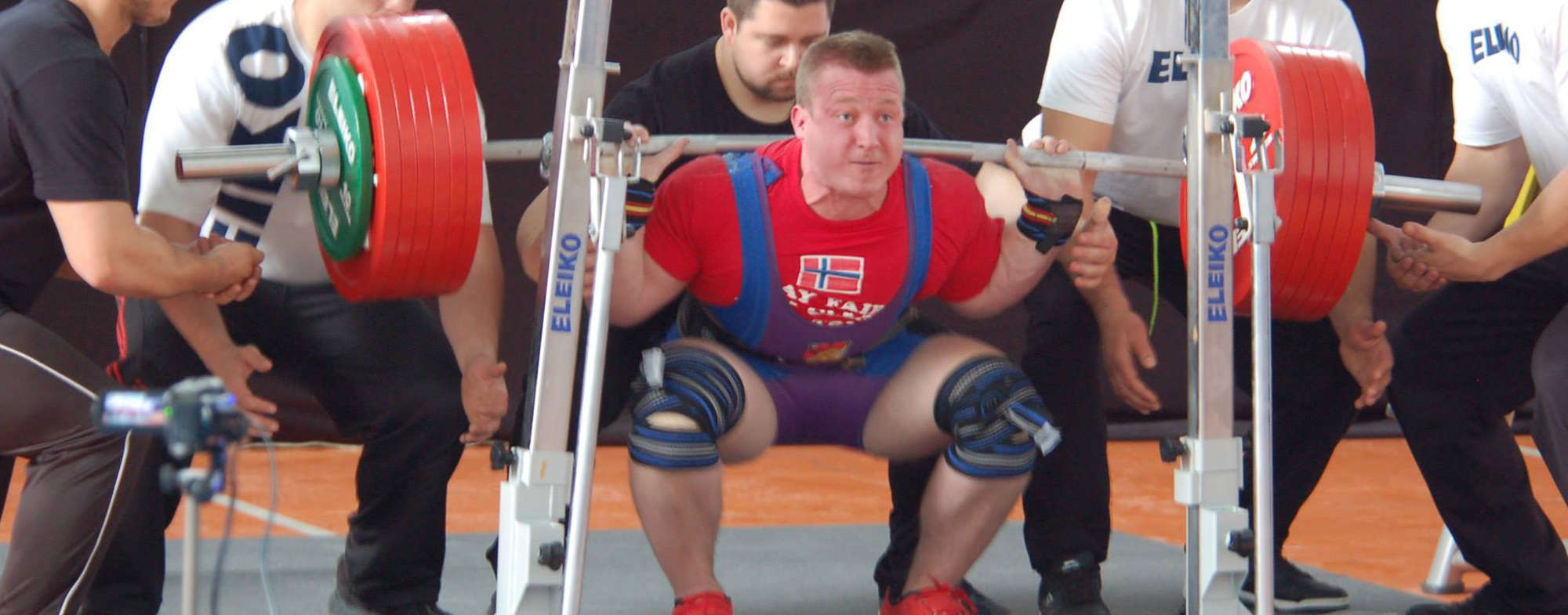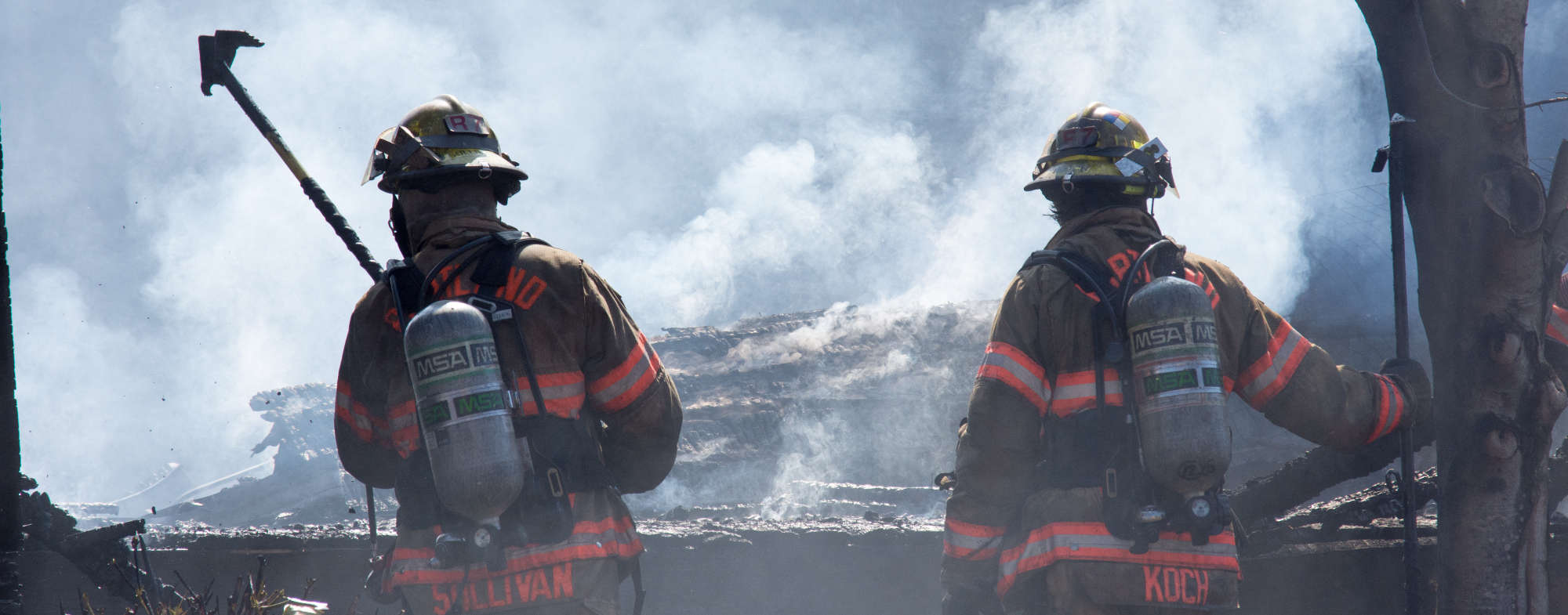Does Bigger = Stronger? Not Usually
Americans vision of strength and fitness shifted in the late 1970s. When guys like Arnold Schwarzenegger and Lou Ferrigno began appearing in films and on television, what we thought about strength training became about one thing: size.
The nascent world of health and fitness soon shifted focus, with sheer mass -- as opposed to all-around health and fitness -- being the arbiter of men’s health. Magazines like Muscle and Fitness, Shape Up and Strength & Health began pushing pictures of guys built like comic book heroes, their oiled muscles rippling off the page, and the supplement industry suddenly exploded with men looking for mass.
The public safety and military worlds soon fell right in line. Cops worked toward having a “physical presence,” firemen wanted to impress the soccer moms at the grocery store, and military guys wanted to look like the G.I. Joe cartoons they grew up watching.
This trend continued on through the 1980s, with the ubiquity of shredded Gold’s Gym shirts and the legendary Muscle Beach acting as the benchmark for what was and what wasn’t defined as “fitness.” We watched American Gladiators and ate our Wheaties in hopes that we too might curl those massive, octagonical dumbbells, our crewcuts and biceps glistening in the sun.
It wasn’t until the mid-to-late 90s that we began to see a shift in our values and focuses, a shift that continues to manifest today in the idea that fitness and strength doesn’t necessarily mean being the biggest and most physically imposing.
And while mass and size are fine if aesthetics are your main goal, or if you’re a naturally large human, science would argue that you don’t need size to see massive gains in strength.
The key to grasping this concept is understanding that all muscle growth is not created equally.
The term “muscular density” refers to the amount of contractile protein that exists versus fluid that is packed into any cross-sectional area of muscle.
Sarcoplasmic hypertrophy is the fluid between the myofibrils and is a non-contractile protein.

While this growth does make muscles bigger, it doesn’t aid in muscular force development. Which is to say that size, in this instance, does not equal strength.
That size, however, is easy to fall in love with. An increase in muscle size feels great and occurs more rapidly than the more productive type of muscle growth. Also, a rapid increase in the size of your muscles is an easy way to convince yourself that all of your hard work at the gym is paying off. You might look better, but you’re probably not getting much stronger.
A long-time staple of the bodybuilding community, training with lower intensity and high volume pushes the feeling of “the pump” and is where most of this growth type occurs.
In addition to this approach to strength, there is an entire market for supplements that promise to give your muscles that full, skin splitting feeling.
Guys have been dropping down and hitting 50 pushups before they leave the house for the bar since the dawn of time. "Party pump" is life.
But are any of these methods actual force producing adaptations?
The answer is no.
Contrary to the growth of sarcoplasmic hypertrophy, myofibrillar hypertrophy is the growth of the sarcomeres, which are contractile proteins. Unlike their all size, little strength counterparts, these are responsible for actual force development.
Imagine the cross-sectional view of this type of growth as a tightly packed handful of pencils. Higher intensity loads and fewer reps per set will elicit this type of change. This type of strength is colloquially called “farm strong” or “old man strength” and is is why you see 165-pound powerlifter deadlifting more than the top 275-pound Bro at the LA Fitness. Place a massive but undefined Olympic weightlifter beside your average Mr. Universe and the layperson would likely assume that the pumped, ripped bodybuilders can move more weight than the Olympic weightlifters.
Noted lifer Kjell Egill Bakkelund from Norway is 165 pounds and has a drug tested 716-pound deadlift. He’s able to do this because his muscles are packed full of functioning contractile proteins rather than the size of muscles full of non-contractile proteins.

Training this way usually involves big muscle groups, multi-joint exercises and explosive movements. You won’t see too many isolation type movements like cable crossovers or calf raises in a powerlifters regimen.
In fact, this type of training is often avoided by people in search of a solely aesthetic look because it usually requires harder work and the results are often felt rather than seen. Much to the powerlifters’ chagrin, the end goal of this training style is not in the mirrors, but in the PRs.
Ask yourself the question “What am I training for?”
If the answer is to be Mr. July in the department calendar, then chase that pump and focus on the mirror. Your workouts will be less intense and you’ll see your gains manifest physically much faster.
If your answer is to be the best possible teammate, then bite down because your workouts are going to be uncomfortable. But you’re going to get stronger. There is no doubting that.
In our chosen professions, we are expected to move quickly over uncertain terrain, put our body in uncomfortable positions, and be able to avoid injury to prolong our careers and sometimes our lives.
Most of us in the public safety and military fields can’t just focus on getting “swole” or focusing on our mass “gainz,” as that size can also hinder movement, speed, aerobic health and pliability. That many of those elements are required in our day to day professional lives prevents us from chasing size in favor of training for actual force development.

We need to tailor our training to make ourselves the most efficient machines possible. We don’t have the luxury to carry around extra weight to “look better” because we usually are carrying extra gear or tools to help get the job done.
Let’s look at a real-life case study to see an example of actual force development versus gains in sheer muscle mass.
The subject is a male in his late-thirties who followed a bodybuilder type of workout regimen for the majority of his adult life. The first sets of measurements were taken about five months after a shift to higher intensity training and the second set was taken after continuing that protocol for another year and a half. Table one measures him at 232 pounds and the second one is at 235 pounds.
Muscle symmetry evened out likely due to unilateral work done during this time frame but there isn’t any glaring bulk gain and there’s only a three-pound difference in total weight.
What changed here is the test subject increased his deadlift by seventy pounds, 50 his bench press and front squat by fifty pounds, a 6 ml/min/kg better VO2 max, shaved forty seconds off his mile time and measured at three percent lower body fat.
This exercise is not to diminish the sport of bodybuilding. Like anything, it requires intense work and dedication. Rather, it is to point out that performance and the development of actual force doesn’t always equal huge biceps and a chest that no shirt can contain.
If your goal really is to be the best performer, then don’t get caught up in trying to fill out that XXXL shirt.
Low intensity, higher reps might get you the size to win bodybuilding competitions, but higher intensity loads will get you the strength that will actually help you move your buddy who’s been shot or that civilian who’s trapped in that upstairs bedroom.
And don’t worry, you’ll still look pretty at the beach.





